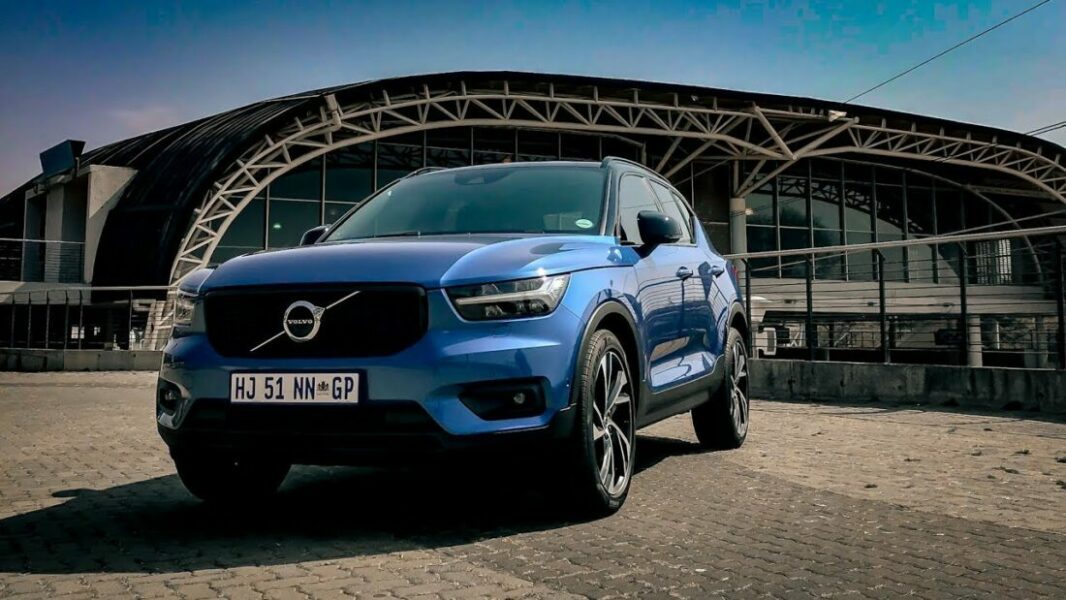
Test: Volvo XC40 D4 R-Design AWD A
Content
The fact that they are working in the right direction was already evident when we first spoke with the developers before the presentation of Volvo's biggest model, the XC90. They boasted that the owners did not interfere and gave them time to develop a platform that would become the basis for a number of models. At the time, the XC90, S, V90 and XC60 proved to us that their predictions were correct – and at the same time raised the question of how good the new XC40 would be.
The first reports (also from the keyboard of our Sebastian, who drove him among the first journalists in the world) were very positive, and the XC40 was immediately recognized as the European Car of the Year.
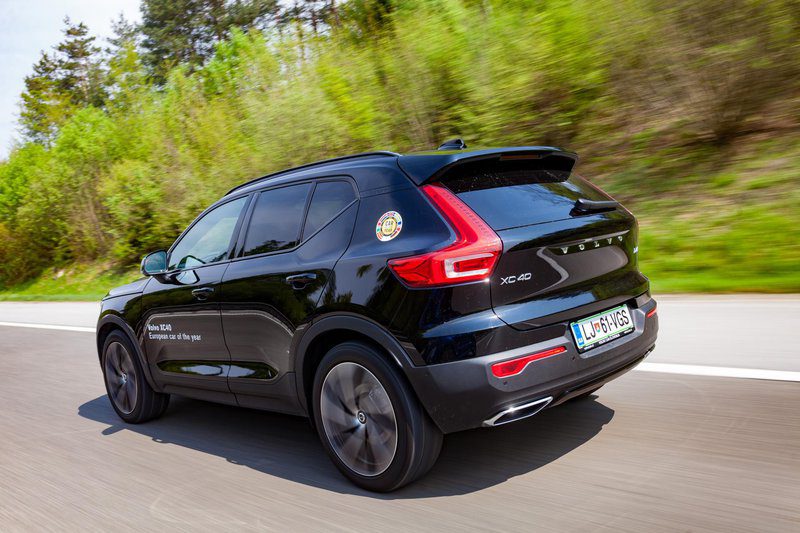
A few weeks ago, the first copy entered our test fleet. Label? D4 R Line. So: the most powerful diesel engine and the highest level of equipment. Below that is the D3 (110 kilowatts) for the diesel and the entry-level three-cylinder T5 of the same power for the petrol, and above that is the 247-horsepower T5 petrol.
The first impression is also the only drawback of the car: this diesel engine is loud - or soundproofing is not up to it. Okay, compared to the competition, this XC40 doesn't even deviate much, but compared to the same motorized, bigger, more expensive brethren we've been spoiled for, the difference is clear.
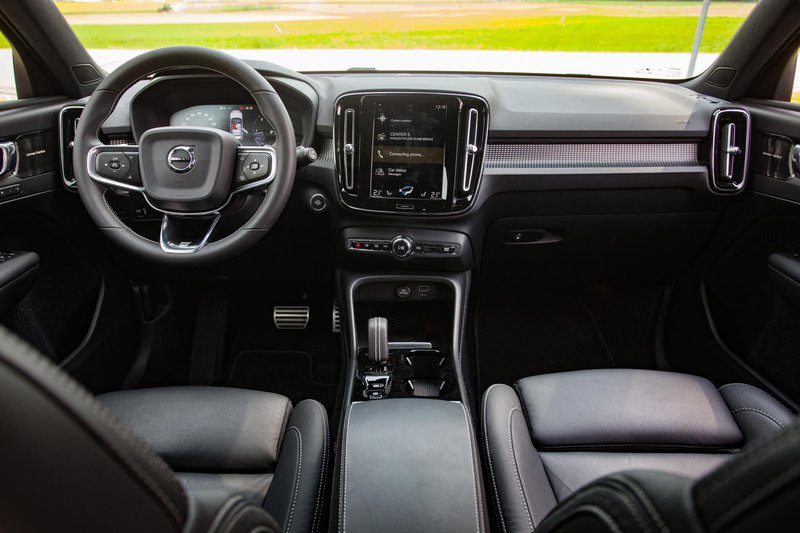
Diesel noise is especially noticeable at urban and suburban speeds during acceleration, but it is true that the rest of the engine connects very smoothly and is perfectly understood with an automatic transmission. And the expense is not superfluous: despite seven hundred tons of empty weight, on a regular circle, on an all-wheel drive car and (nevertheless, despite the warm weather) on winter tires, it stopped at only 5,8 liters. And a purely subjective observation about consumption: it mostly pushes in the city. Both conclusions (one about noise and one about consumption) give a very clear hint: the best option could (again, as is the case with the bigger brothers) become a hybrid plug-in. It will appear in the second half of the year and will combine a 180-horsepower (133 kilowatt) version of a three-cylinder gasoline engine (from the T3 model) and a 55-kilowatt electric motor for a total system power of 183 kilowatts. ... The battery capacity will be 9,7 kilowatt-hours, which is enough for a real 40 kilometers of electric mileage. In fact, this is more than most Slovenian drivers need (considering their daily commute), so it is obvious that this will drastically reduce consumption (which in the D4 in the city rarely drops below nine liters). In the end: the much larger and heavier XC90 (with a smaller electric range) only consumed six liters in the hybrid version with the standard layout, so we can easily expect the XC40 T5 Twin Engine to drop below five. And since the price (before subsidy) has to be comparable to that of the D4, and the performance is better (and the drivetrain is much quieter), it's clear that the XC40 plug-in hybrid could be a real success. ...
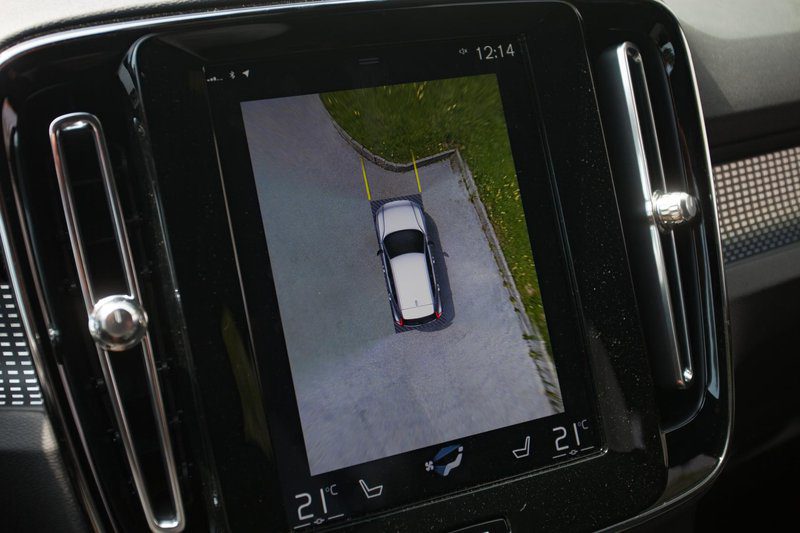
But back to the D4: aside from the noise, there's nothing wrong with the drivetrain (all-wheel drive is fast and reliable too), and the same goes for the chassis. It's not spacious (the XC40 won't be), but it's a good compromise between comfort and reasonably secure road position. If you're thinking of an XC40 with extra, bigger wheels (and correspondingly smaller cross-section tires), you can shock the cockpit with the short, sharp cross-section wheels, but the chassis deserves a (very) commendation - the same and of course sports standards. SUVs or crossovers) also on the steering wheel. If you want a little more comfort, don't go for the R Design version we tested, as it has a slightly stiffer and sportier chassis.
As with the exterior, the XC40 shares many design features, switches, or pieces of equipment with its larger siblings. As such, it sits very well (drivers over ninety meters may only wish for an inch more fore-and-aft seatback travel), there's plenty of room in the rear, and overall there's enough room in the cabin and trunk for a family of four. – even if older kids and ski luggage. Just think of a mesh to separate the luggage compartment from the cabin in the latter case.
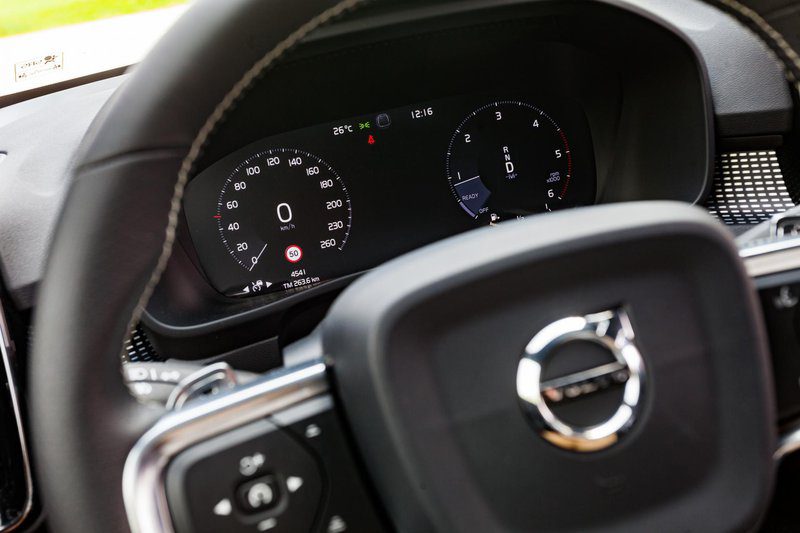
The R Design designation stands for not only a stronger chassis and some design highlights, but also a very complete safety package. In fact, for the XC40 to be as fully equipped as the test one, only two accessories need to be cut: Active Cruise Control with Pilot Assist (€ 1.600) and Blind Spot Assist (€ 600). If we add Apple CarPlay, a smart key (which also includes an electric tailgate opening on command with a foot under the bumper), active LED headlights and an advanced parking system, the final number will increase by about two thousand. That's all.
These assist systems work really well, we just wish we had a little more precise lane stability. When using Pilot Assist, the car does not "bounce" off the edge lines, but tries to keep in the middle of the lane, but does so with too rough or insufficient federal amendments. Not bad, but it could have been a better shade.
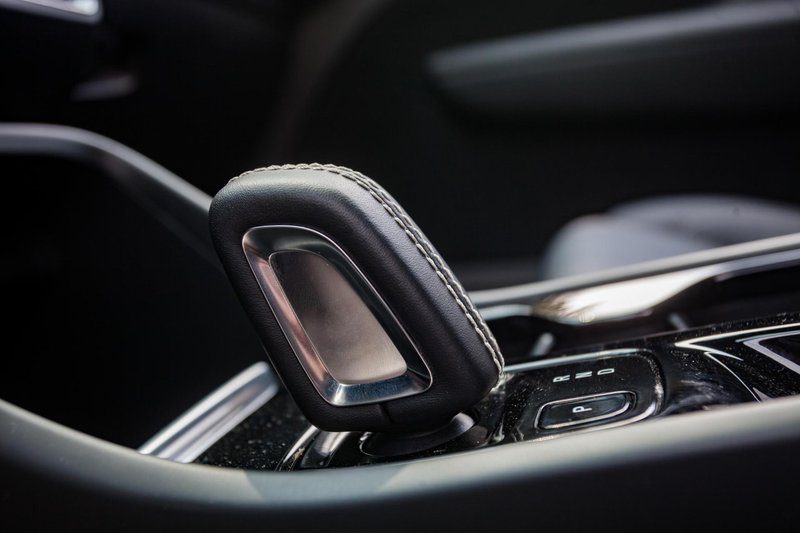
The gauges are of course digital and highly flexible, while the center 12-inch infotainment screen is vertically positioned and, along with the latest systems from Audi, Mercedes and JLR, is one of the best in the range. The controls are intuitive and smooth, and the system also allows for ample customization.
So the platform is the same, but: is the XC40 really the real little brother of the XC60 and XC90? It is, especially if you're thinking about it with a better engine (or waiting for a plug-in hybrid). This is a thumbnail of them, with plenty of modern technology that puts it at the top of its class. And in the end: the price at Volvo was not too high either. To brag out loud, their engineers apparently took the diesel engine too literally.
Read more:
Test: Volvo XC60 T8 Twin Engine AWD R Design
Short test: Audi Q3 2.0 TDI (110 kW) Quattro Sport
In short: the BMW 120d xDrive
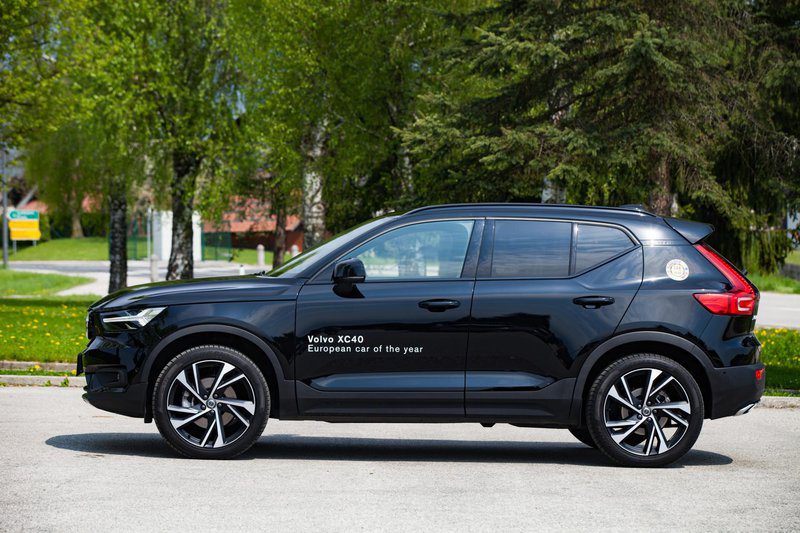
Volvo XC40 D4 R-Design all-wheel drive A
Basic data
| Sales: | VCAG doo |
|---|---|
| Test model cost: | 69.338 € |
| Base model price with discounts: | 52.345 € |
| Test model price discount: | 69.338 € |
| Power: | 140kW (190 KM) |
| Acceleration (0-100 km / h): | 9,0 with |
| Maximum speed: | 210 km / h |
| Guarantee: | General warranty two years without mileage limitation |
| Systematic review | 30.000 km / 12 |
Cost (up to 100.000 km or five years)
| Regular services, works, materials: | 2.317 € |
|---|---|
| Fuel: | 7.517 € |
| Tires (1) | 1.765 € |
| Loss of value (within 5 years): | 25.879 € |
| Compulsory insurance: | 5.495 € |
| CASCO INSURANCE (+ B, K), AO, AO + | 9.330 ( |
| Calculate the cost of auto insurance | |
| Buy up | € 52.303 0,52 (km cost: XNUMX €) |
Technical information
| engine: | 4-cylinder - 4-stroke - in-line - turbodiesel - front mounted transversely - bore and stroke 82 × 93,2 mm - displacement 1.969 cm3 - compression 15,8:1 - maximum power 140 kW (190 hp) at 4.000 rpm - average piston speed at maximum power 12,4 m / s - specific power 71,1 kW / l (96,7 l. injection - exhaust turbocharger - charge air cooler |
|---|---|
| Energy transfer: | the engine drives all four wheels - 8-speed automatic transmission - gear ratio I. 5,250; II. 3,029 hours; III. 1,950 hours; IV. 1,457 hours; v. 1,221; VI. 1,000; VII. 0,809; VIII. 0,673 - Differential 3,200 - Wheels 8,5 J × 20 - Tires 245/45 R 20 V, rolling range 2,20 m |
| Capacity: | top speed 210 km/h - 0-100 km/h acceleration in 7,9 s - average fuel consumption (ECE) 5,0 l/100 km, CO2 emissions 131 g/km |
| Transportation and suspension: | crossover - 5 doors - 5 seats - self-supporting body - front single suspension, leaf springs, three-spoke cross rails, stabilizer - rear multi-link axle, coil springs, telescopic shock absorbers, stabilizer - front disc brakes (forced cooling), rear discs, ABS, electric parking brake on rear wheels (shift between seats) - rack and pinion steering wheel, electric power steering, 2,6 turns between extreme points |
| Mass: | empty vehicle 1.735 kg - Permissible total weight 2.250 kg - Permissible trailer weight with brake: 2.100 kg, without brake: np - Permissible roof load: np |
| External dimensions: | length 4.425 mm - width 1.863 mm, with mirrors 2.030 mm - height 1.658 mm - wheelbase 2.702 mm - front track 1.601 - rear 1.626 - ground clearance diameter 11,4 m |
| Inner dimensions: | longitudinal front 880-1.110 620 mm, rear 870-1.510 mm - front width 1.530 mm, rear 860 mm - head height front 960-930 mm, rear 500 mm - front seat length 550-450 mm, rear seat 365 mm - steering wheel diameter 54 mm – fuel tank L XNUMX |
| Box: | 460-1.336 l |
Our measurements
| T = 20 ° C / p = 1.028 mbar / rel. vl. = 56% / Tires: Pirelli Scorpion Winter 245/45 R 20 V / Odometer status: 2.395 km | |
| Acceleration 0-100km: | 9,0s |
|---|---|
| 402m from the city: | 16,4 years ( 137 km / h) |
| Fuel consumption according to the standard scheme: | 5,8 l / 100km |
| Braking distance at 130 km / h: | 73,6m |
| Braking distance at 100 km / h: | 44,7m |
| AM table: | 40m |
| Noise at 90 km / h | 58dB |
| Noise at 130 km / h | 62dB |
| Test errors: | Unmistakable |
Overall rating (450/600)
Volvo has proven that a great upmarket crossover can be made with a smaller shape. However, we suspect a plug-in hybrid (or the model with the weakest gasoline in the nose) would be an even better choice. Noisy diesel took XC40 four in the overall ranking
Cab and trunk (83/110)
Although the XC40 is currently Volvo's smallest SUV, it is still more than enough for family needs.
Comfort (95
/ 115)There may be less noise (diesel is loud, wait for the plug-in hybrid). Infotainment and ergonomics on top
Transmission (51
/ 80)The four-cylinder diesel is powerful and economical, yet durable and unpolished.
Driving performance (77
/ 100)Of course, such an SUV cannot be driven like a sports sedan, and since the suspension is stiff enough and the tires are extremely low, comfort is lacking.
Security (96/115)
Safety, both active and passive, is at the level you'd expect from a Volvo.
Economy and environment (48
/ 80)Consumption is not too high and base prices are reasonable too, especially if you come across a special offer. But when it comes down to it, a plug-in hybrid would be the best bet.
Driving pleasure: 2/5
This XC40 has too stiff suspension, on the one hand, to enjoy a truly comfortable ride, and, on the other hand, too much SUV to be enjoyable when cornering.
We praise and reproach
help systems
Equipment
infotainment system
appearance
too loud diesel
blind spot monitoring system is not included in the standard